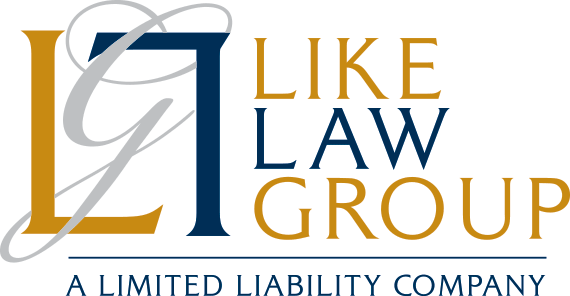You and your spouse live together, work together, and likely spend a great deal of your free time together. Having a successful marriage and business takes hard work and dedication, but it can also be among the most rewarding things in life. To help keep you on the right track, here are a few tips.
- Create separate budgets for your family and your business. Money can be a tense topic, even for the average married couple. With a family and a business to run, it is especially important for the two of you to sit down and agree on a budget for your family as well as a budget for your business. By having open and honest communications about your finances, both personally and professionally, you can stave off more heated conversations.
- Keep work at work. While your business is likely the main source of your family’s income—and often the main thing on your mind—it is important to create a boundary between your work lives and your home lives. If your business has a physical location outside your home, establish a rule that you and your spouse will discuss business only while you are at work. If you and your spouse are running a home-based business, you can establish “business hours,” and any time outside those hours is personal time when business will not be discussed. Whichever approach you use, it is important that you allocate enough time to accomplish your work.
- Have your own hobby. Because you probably spend so much time together, it is important for each of you to take time alone to do something that you enjoy. This can be as simple as carving out time to take a long relaxing bath or joining a local soccer team. Having your own hobby allows you to access another part of yourself and take a break from the usual routine. Studies have also shown that individuals who have hobbies they enjoy tend to have lower blood pressure, are less stressed, and are happier overall.
- Have your estate plan prepared or reviewed. Like any other couple, business-owning spouses need estate planning to protect each other and help ensure a financially secure and prosperous future for their loved ones. When a couple works together in a business, their financial picture and overall goals may be complicated and intertwined, making proper estate planning an even greater necessity. Below are some of the basic estate planning tools you need to protect yourself, your family, and your business.
- Revocable living trust.With a revocable living trust (often simply called a trust), your money, property, and even your interest in your business are owned by the trust rather than by you personally. While this may seem scary, it does not mean that you are giving up control. In creating the trust, you can name yourself as the trustee (the one in charge of managing the money and property, including your business interest, which is owned by the trust) and as the current beneficiary (the person who gets the enjoyment from the money, property, and business). The major benefit of having the trust own your money, property, and business is that, when you die, these assets pass to your designated beneficiaries without having to go through probate court proceedings. Also, if you are ever unable to manage your affairs while you are alive, the successor trustee you appoint can easily step in and take over management of the trust assets (including your business interest), thereby preventing unwanted disruption. Both of these advantages will save your family time and money and can keep your personal affairs private.
In addition to avoiding probate, a trust allows you to provide some instruction for the future of your business. It can address questions regarding who will run the business if you are unable to continue or after your death, whether the next generation is ready to step up and lead, and whether you want to provide for a beneficiary not involved in the business. - Financial power of attorney. By default, no one (not even your spouse) can make financial or legal decisions for you during your lifetime unless you legally select someone through the creation of a financial power of attorney. If you do not make this choice through proactive legal planning, the probate court will appoint someone for you, often through a very public and costly proceeding. Although your spouse may be the best person to make decisions about you and your business, they need the appropriate authority to do so. Executing a financial power of attorney can facilitate a smooth transition during a stressful and emotional time if, for some reason, you are unable to make decisions for yourself.
This document is incredibly important if only one of you is the legal owner of the business, even if both of you consider yourselves partners. Although the other spouse may be intimately familiar with the operations, they cannot make any decisions that may be necessary to keep the business going without the proper authority. - Medical power of attorney. As with financial matters, no one has the authority to make medical decisions for you during your lifetime unless you select them through proactive estate planning (via a medical power of attorney) or they are appointed by the court. If you are unable to communicate your wishes when an emergency arises, it is important that the person who will decide your course of treatment is someone you trust. If you leave the decision up to the court, there is always a chance that it will appoint a person you would not have chosen.
- Limited liability company or other business entity. Depending on how your business is currently structured, part of the planning process may include reviewing your business structure to ensure that it has been set up in a way that offers you the maximum asset protection, tax benefits, and ease in transitioning ownership to the next generation. One common way to achieve these benefits is by operating your business through a legally recognized business entity, such as a limited liability company (LLC). As part of your estate plan, you may then choose to transfer ownership of the LLC to your living trust to help secure all of the advantages of a living trust outlined above.
- Revocable living trust.With a revocable living trust (often simply called a trust), your money, property, and even your interest in your business are owned by the trust rather than by you personally. While this may seem scary, it does not mean that you are giving up control. In creating the trust, you can name yourself as the trustee (the one in charge of managing the money and property, including your business interest, which is owned by the trust) and as the current beneficiary (the person who gets the enjoyment from the money, property, and business). The major benefit of having the trust own your money, property, and business is that, when you die, these assets pass to your designated beneficiaries without having to go through probate court proceedings. Also, if you are ever unable to manage your affairs while you are alive, the successor trustee you appoint can easily step in and take over management of the trust assets (including your business interest), thereby preventing unwanted disruption. Both of these advantages will save your family time and money and can keep your personal affairs private.
Having a successful marriage and business takes hard work. We can assist in ensuring that your family and business are protected if unforeseen circumstances befall your family. Call us today to schedule an appointment.












